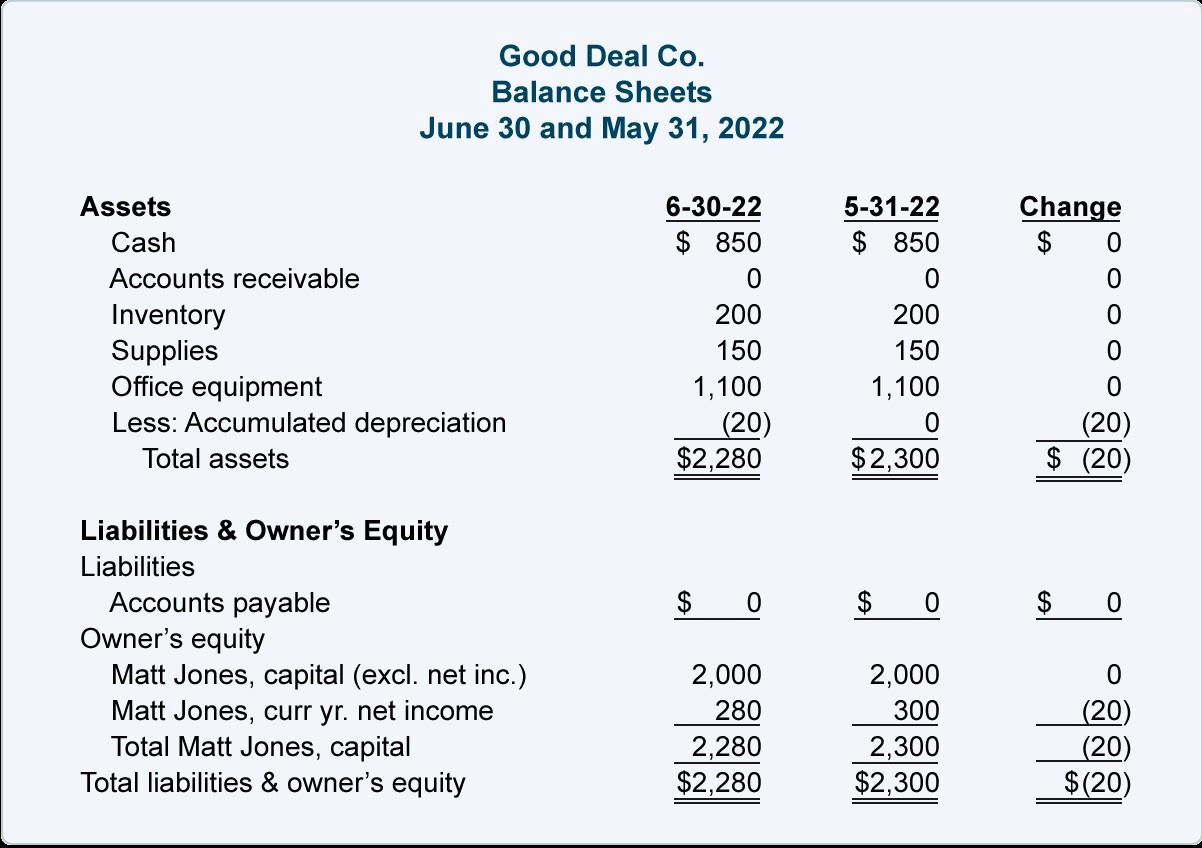Home>Finance>How To Request A Credit Limit Increase With Credit One Bank


Finance
How To Request A Credit Limit Increase With Credit One Bank
Modified: March 6, 2024
Learn how to request a credit limit increase with Credit One Bank. Manage your finances effectively and enhance your borrowing power with our expert tips and guidance.
(Many of the links in this article redirect to a specific reviewed product. Your purchase of these products through affiliate links helps to generate commission for LiveWell, at no extra cost. Learn more)
Table of Contents
- Introduction
- Understanding Credit Limit Increases
- Assessing Your Current Credit Situation
- Gathering Necessary Documents and Information
- Contacting Credit One Bank
- Making a Formal Request
- Providing Additional Documentation
- Waiting for a Response
- Handling a Denied Request
- Tips for a Successful Credit Limit Increase Request
- Conclusion
Introduction
Requesting a credit limit increase with Credit One Bank can be a smart financial move for individuals looking to expand their purchasing power and improve their credit utilization ratio. By increasing your credit limit, you can have more flexibility in your spending and potentially boost your credit score. However, understanding the process and knowing how to make an effective request is crucial.
Credit limit increases are not automatically granted by Credit One Bank. Instead, you need to take the initiative to request an increase and provide the necessary information that demonstrates your creditworthiness. This includes factors such as your payment history, income, and current credit utilization.
In this article, we will guide you through the steps to request a credit limit increase with Credit One Bank successfully. From assessing your current credit situation to gathering required documents and making a formal request, we will provide you with invaluable insights to navigate the process smoothly.
Remember, a credit limit increase can have significant financial implications. It can offer you more financial flexibility, improve your credit score, and potentially open doors to better credit card offers in the future. So let’s dive in and learn the strategies to effectively request a credit limit increase with Credit One Bank.
Understanding Credit Limit Increases
Before diving into the process of requesting a credit limit increase with Credit One Bank, it’s important to understand what a credit limit increase is and how it can impact your financial situation.
A credit limit increase is when a credit card issuer, such as Credit One Bank, approves a higher credit limit for your account. The credit limit is the maximum amount you can borrow on your credit card. By increasing your credit limit, you have access to additional funds, which can be beneficial for various reasons.
Firstly, a higher credit limit can give you more purchasing power. It allows you to make larger purchases without worrying about maxing out your card or exceeding your credit limit. This is particularly helpful for big-ticket items or unexpected expenses that may arise.
Secondly, a credit limit increase can improve your credit utilization ratio. Your credit utilization ratio is the percentage of your available credit that you’re currently using. A lower utilization ratio is better for your credit score. By increasing your credit limit, you effectively lower your utilization ratio, potentially improving your credit score.
Lastly, a higher credit limit can provide you with a sense of financial security. It serves as a safety net in case of emergencies or unforeseen circumstances where you need access to additional funds quickly. Having a higher credit limit can provide peace of mind, knowing that you have a buffer to rely on when needed.
It’s important to note that a credit limit increase is not guaranteed. Credit One Bank and other credit card issuers have specific criteria and guidelines that need to be met in order to qualify for an increase. This includes factors such as your payment history, income, and creditworthiness. Therefore, it’s crucial to assess your current credit situation and gather the necessary documentation before making a request.
Now that you have a better understanding of what a credit limit increase is and its potential benefits, let’s explore how to assess your current credit situation and determine if you’re ready to request a credit limit increase with Credit One Bank.
Assessing Your Current Credit Situation
Before requesting a credit limit increase with Credit One Bank, it’s important to assess your current credit situation. This evaluation will help you determine if you’re in a good position to request an increase and increase your chances of approval.
The first step is to pull your credit report from one of the major credit bureaus – Experian, Equifax, or TransUnion. Review your credit report carefully, looking for any errors, delinquencies, or negative marks that may affect your creditworthiness. If you identify any inaccuracies, promptly dispute them with the credit bureau to have them corrected.
Next, evaluate your payment history. Credit One Bank, like other credit card issuers, wants to see a consistent record of on-time payments. Late payments or a history of missed payments can negatively impact your chances of getting a credit limit increase. It’s crucial to demonstrate responsible credit behavior by paying your bills on time.
In addition to your payment history, consider your current credit utilization ratio. This is the percentage of your available credit that you’re currently using. A high utilization ratio can indicate a higher risk to creditors. Aim to keep your utilization ratio below 30% to show that you’re responsibly managing your available credit.
Another factor to consider is your income. Credit One Bank may want to assess your ability to manage a higher credit limit by reviewing your income. Ensure that you have accurate and up-to-date information on your income, including documentation such as pay stubs, tax returns, or bank statements.
Lastly, take into account the length of your credit history. Credit One Bank may prefer to extend a credit limit increase to individuals with a longer history of responsible credit management. If you’re a newer cardholder, it may be beneficial to wait until you have established a solid credit history before requesting an increase.
By thoroughly assessing your current credit situation, you can determine if you’re in a strong position to request a credit limit increase. If you have a history of on-time payments, a low utilization ratio, a steady income, and a solid credit history, you may be more likely to receive approval for a credit limit increase from Credit One Bank.
With a clear understanding of your credit situation, let’s move on to the next step in the process – gathering the necessary documents and information.
Gathering Necessary Documents and Information
Once you have assessed your current credit situation and determined that you are in a strong position to request a credit limit increase with Credit One Bank, it’s time to gather the necessary documents and information to support your request.
The specific documentation required may vary, but generally, you will need to provide information related to your income, expenses, and financial stability. Here are some essential documents and information you should gather:
- Proof of income: Prepare documents that demonstrate your income, such as recent pay stubs, tax returns, or bank statements. This shows Credit One Bank that you have a stable source of income to support a higher credit limit.
- Employment information: Have the details of your current employer, including their name, address, and contact information. This information may be required to verify your employment status and income.
- Financial obligations: Make a list of your current financial obligations, including loans, mortgages, and other credit card balances. This will give Credit One Bank an overview of your existing debts and your ability to handle additional credit.
- Payment history: Compile a record of your payment history, highlighting your on-time payments. This can include bank statements or credit card statements that show your consistent payment behavior.
- Credit utilization: Calculate your current credit utilization ratio by dividing your total credit card balances by your total credit limits. This information will give Credit One Bank insight into how responsibly you are managing your existing credit.
Additionally, it’s important to have your Credit One Bank account details readily available, such as your account number and any relevant contact information. This will make it easier for you to fill out any required forms or provide the necessary information when contacting the bank.
By gathering these documents and information in advance, you will be well-prepared to proceed with your credit limit increase request. These documents will help substantiate your financial stability and creditworthiness when making your formal request to Credit One Bank. With your materials in order, it’s time to move on to the next step – contacting Credit One Bank.
Contacting Credit One Bank
Once you have assessed your credit situation, gathered the necessary documents, and prepared your information, it’s time to reach out to Credit One Bank to request a credit limit increase. There are several avenues you can take to contact the bank, including:
- Phone: Call the customer service number provided on the back of your Credit One Bank credit card. Be prepared to provide your account information and explain your request for a credit limit increase.
- Online chat: Check Credit One Bank’s website to see if they offer an online chat option. This allows you to communicate with a representative who can assist you with your credit limit increase request.
- Email or mail: Some credit card issuers may provide the option to submit your request via email or traditional mail. Check Credit One Bank’s website or contact their customer service for instructions on how to submit your request through these channels.
When contacting Credit One Bank, it’s crucial to be clear and concise in your communication. Clearly state your intent to request a credit limit increase and explain why you believe you deserve one. Highlight your positive credit history, responsible payment behavior, and any changes in your financial situation that may warrant a higher credit limit.
It’s important to remember that the representative you speak to or contact may have limited authority to approve a credit limit increase. They may need to escalate your request to a specialized department for further review and evaluation. Be patient and polite during the conversation, and make sure to note down any reference numbers or important information shared during the call or interaction.
In some cases, Credit One Bank may evaluate your account periodically and automatically offer a credit limit increase. However, it’s still beneficial to proactively reach out to them and request an increase if you believe you are eligible.
Now that you have contacted Credit One Bank and made your request for a credit limit increase, let’s move on to the next step – making a formal request.
Making a Formal Request
When requesting a credit limit increase with Credit One Bank, it’s important to make a formal request that clearly communicates your intentions and provides the necessary information to support your case. Here are some key steps to follow when making a formal request:
- Prepare a written request: Write a formal letter or email addressed to Credit One Bank’s credit limit increase department. Begin by stating your intention to request a credit limit increase and provide your account information for reference.
- Explain your request: In the body of your letter or email, clearly explain why you believe you deserve a credit limit increase. Highlight your positive credit history, responsible payment behavior, and any changes in your financial situation that may warrant a higher credit limit.
- Mention your good standing: Emphasize that you have been a loyal and responsible customer, always making timely payments and maintaining a low credit utilization ratio.
- Provide supporting documentation: Attach any supporting documentation that showcases your financial stability and ability to handle a higher credit limit. This could include copies of recent pay stubs, tax returns, or bank statements that demonstrate your income and financial capacity.
- Express gratitude and request a timely response: Thank Credit One Bank for their consideration and ask for a timely response to your request. This sets the expectation that you’re looking for a prompt review and decision on the credit limit increase.
It’s important to be respectful and professional in your communication. Keep your request concise and to the point, ensuring that you include all the necessary information without overwhelming the reader. Remember to proofread your letter or email before sending it to ensure there are no spelling or grammatical errors.
When sending your formal request, consider sending it via a trackable method such as certified mail or email with a read receipt. This allows you to have proof of delivery and ensures that Credit One Bank receives your request.
Now that you have made a formal request for a credit limit increase, the next step is to provide any additional documentation if requested by Credit One Bank. We will discuss this in the following section.
Providing Additional Documentation
After making your formal request for a credit limit increase with Credit One Bank, they may request additional documentation or information to further evaluate your eligibility. It’s important to promptly provide any requested documents to ensure a smooth and efficient review process. Here’s how to handle providing additional documentation:
- Review the request: Carefully read the communication from Credit One Bank to understand what specific documentation they are requesting. It could be related to your income, employment status, or any other relevant financial information.
- Gather the required documents: Collect the requested documents, ensuring they are up-to-date and accurate. For example, if they have asked for recent pay stubs or tax returns, make sure you have the most recent ones available.
- Organize the documentation: Arrange the documents in a logical order and make copies of each one. This will help you keep track of what you have provided and make it easier to submit them to Credit One Bank.
- Submit the documentation: Follow the instructions provided by Credit One Bank on how to submit the additional documentation. This could be through email, fax, or uploading the files to a secure online portal. Make sure to include your account information and any reference numbers they have provided in your correspondence.
- Keep copies for your records: Before sending the documents, make copies for your own records. This way, you have a record of what you’ve provided and can refer back to it if needed.
It’s important to provide the requested documentation in a timely manner. Delays in submitting additional documents may result in a longer review process or even a denial of your credit limit increase request. Therefore, make it a priority to gather the necessary information and promptly submit it to Credit One Bank.
Once you have provided the additional documentation, it’s time to wait for a response from Credit One Bank. The next section will discuss what to expect during this waiting period and how to handle a denied request.
Waiting for a Response
After submitting your credit limit increase request and any additional documentation, it’s time to patiently wait for a response from Credit One Bank. The waiting period can vary, but typically, you can expect to receive a response within a few weeks. Here’s what to expect during this time:
1. Acknowledgement of your request: Shortly after submitting your request, you may receive an acknowledgement email or letter from Credit One Bank. This serves as confirmation that they have received your request and are reviewing it. The acknowledgment may also provide an estimated timeframe for their decision.
2. Review and evaluation: Credit One Bank will carefully review your request, considering factors such as your credit history, payment behavior, income, and other relevant information. They may also assess their own internal risk analysis when making their decision.
3. Communication of the decision: Once a decision has been reached, Credit One Bank will notify you of their response. If your request is approved, they will inform you of the new credit limit and any other relevant details. On the other hand, if your request is denied, they will provide you with a reason for the decision.
It’s important to remember that even if your initial request is denied, it doesn’t mean you can’t try again in the future. Take note of the reasons for the denial and take steps to address those concerns. Improving your credit score, reducing your outstanding debt, or establishing a longer credit history may increase your chances of success in the future.
During the waiting period, it’s important to continue practicing responsible credit management. Make timely payments on your existing credit card balances and avoid taking on unnecessary debt. This will demonstrate to Credit One Bank and other creditors that you are a reliable and creditworthy borrower.
If you haven’t heard back from Credit One Bank within the estimated timeframe provided, you can consider reaching out to their customer service to inquire about the status of your request. They should be able to provide you with an update or additional information, if necessary.
Now that you’ve completed the request process and are waiting for a response, it’s important to be prepared for both outcomes – an approved or denied request. The next section will provide guidance on how to handle a denied credit limit increase request.
Handling a Denied Request
Receiving a denied credit limit increase request from Credit One Bank can be disappointing, but it’s essential to handle the situation effectively and consider your next steps. Here are some steps to take if your request is denied:
1. Understand the reason: Carefully review the reason provided by Credit One Bank for the denial. Common reasons can include a limited credit history, a high credit utilization ratio, or a recent negative credit event. Understanding the specific reason will help you address it in the future.
2. Request clarification if needed: If the reason for the denial is unclear, you can reach out to Credit One Bank for clarification. Understanding their decision-making process can provide insights into what changes or improvements may increase your chances of approval in the future.
3. Assess your credit report: Request a copy of your credit report from one of the major credit bureaus – Experian, Equifax, or TransUnion. Review it carefully to identify any potential errors or areas of improvement. Dispute any inaccuracies and work on improving any negative marks on your report.
4. Improve your creditworthiness: Take steps to improve your overall creditworthiness. This can include making timely payments on all your outstanding debts, decreasing your credit card balances, and avoiding new credit inquiries. These actions can positively impact your credit score and demonstrate responsible credit management.
5. Build a longer credit history: If your credit history is limited, consider opening a new credit account, such as a secured credit card or a credit-builder loan. Regularly using and making timely payments on these accounts can help establish a positive credit history over time.
6. Reapply in the future: A denied request does not mean you can’t apply for a credit limit increase in the future. Once you have made the necessary improvements to your credit profile, you can consider reapplying. It’s recommended to wait at least six months before submitting a new request to allow enough time for significant changes to be reflected on your credit report.
Remember, a denied credit limit increase does not define your financial future. Use it as an opportunity to assess your credit profile, make improvements, and strive for better financial health. With time and responsible credit management, you may increase your chances of securing a credit limit increase with Credit One Bank or other credit card issuers in the future.
Now that we’ve covered how to handle a denied credit limit increase request, let’s move on to some tips for a successful credit limit increase request.
Tips for a Successful Credit Limit Increase Request
When requesting a credit limit increase with Credit One Bank, there are several tips you can follow to increase your chances of a successful outcome. Implementing these strategies can help you present a strong case and showcase your creditworthiness:
1. Maintain a good payment history: Make sure to consistently make on-time payments for all your credit obligations. Late payments or missed payments can negatively impact your creditworthiness and decrease your chances of a credit limit increase.
2. Keep your credit utilization low: Aim to keep your credit card balances low in comparison to your credit limits. A lower credit utilization ratio demonstrates responsible credit management and may increase your chances of approval for a credit limit increase.
3. Increase your income: If possible, work on increasing your income by seeking promotions, taking on additional work, or pursuing new career opportunities. Showing a higher income can increase your creditworthiness and strengthen your request for a credit limit increase.
4. Monitor your credit score: Keep a close eye on your credit score and work on improving it over time. Regularly review your credit report for any errors and dispute them promptly. A higher credit score can boost your chances of approval for a credit limit increase.
5. Demonstrate responsible credit behavior: Show responsible credit behavior by not maxing out your credit cards, avoiding unnecessary debt, and maintaining a healthy mix of credit accounts. Lenders want to see that you can manage credit responsibly before granting a credit limit increase.
6. Use your credit card regularly: Use your Credit One Bank credit card regularly for small purchases and make sure to pay off the balance in full each month. Active usage of your card shows that you can handle credit responsibly and increases your chances of a credit limit increase.
7. Be patient: Building a strong credit profile takes time. If your initial request for a credit limit increase is denied, don’t be discouraged. Continue practicing good credit habits, and consider reapplying in the future once you have made improvements to your credit profile.
Remember, each credit card issuer has its own criteria and guidelines for granting credit limit increases. While following these tips can increase your chances of success, there is no guarantee of approval. It’s important to be consistent, patient, and proactive in managing your credit to improve your chances over time.
Now, armed with these tips, you can make a well-prepared and compelling request for a credit limit increase with Credit One Bank.
Conclusion
Requesting a credit limit increase with Credit One Bank can be a strategic move to expand your purchasing power and improve your credit score. By understanding the process, assessing your credit situation, and following the necessary steps, you can increase your chances of a successful credit limit increase request.
Throughout this article, we explored the importance of understanding credit limit increases, assessing your current credit situation, gathering necessary documents and information, and contacting Credit One Bank to make a formal request. We also discussed the importance of providing additional documentation, waiting for a response, handling a denied request, and shared tips for a successful credit limit increase request.
Remember, building and maintaining a positive credit profile is a journey that takes time and effort. Practice responsible credit behavior by making on-time payments, keeping credit card balances low, and regularly monitoring your credit report. These habits will not only increase your chances of a successful credit limit increase request but also pave the way for better financial opportunities in the future.
If your request for a credit limit increase is denied, don’t be discouraged. Take it as an opportunity to assess your credit standing, make improvements, and strategically build your creditworthiness. With time, patience, and responsible credit management, you can increase your chances of securing a credit limit increase in the future.
Lastly, remember that Credit One Bank’s criteria for granting credit limit increases may change over time. It’s recommended to refer to their official website or contact their customer service for the most up-to-date information and instructions regarding credit limit increase requests.
By following the steps outlined in this article and implementing the tips provided, you’ll be well-equipped to request a credit limit increase with Credit One Bank and take a positive step towards improving your financial capabilities and credit standing.














